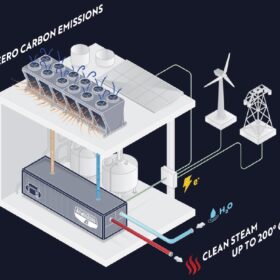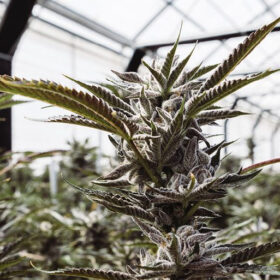The impact of wildfires on PV power generation
Scientists have quantified the impact of wildfires on the availability of direct normal irradiance and global horizontal irradiance at the state, regional, and national levels in the United States. They have found that direct irradiance is more sensitive to smoke than the PV-relevant global horizontal irradiance.
Powering restaurants with rooftop PV, reversible fuel cells
Researchers have simulated the operation of bifacial PV and proton exchange membrane reversible fuel cells across restaurants in five different US states. Taking into account varying rates of bifacial PV’s rearside gains, they found that LCOE was as low as $0.029 per kWh.
The impact of semi-transparent solar modules on agrivoltaics yield
Researchers have conducted a field study across two growing seasons, growing different kinds of vegetables under three types of modules with 40%, 5%, and 0% transparency. Their work is the first replicated research experiment that evaluates module transparency in an irrigated vegetable field setting.
What crops fit with vertical agrivoltaics?
Research at three Canadian locations tried to identify which crops can grow between differently spaced rows of vertical agrivoltaic systems. The scientists concluded that all traditional corps could be grown at the research sites, including arugula, beets, bok choy, celery, coriander, collards, fava beans, kale, lettuce, parsley, parsnips, peas, swiss chard, and thyme.
Ensemble techniques for solar energy forecasts
A Chinese research group has sought to understand the relative performance of two weather prediction techniques based on ensemble modeling for solar energy forecasts. The scientists applied the two methods in combination with three classical post-processing methods.
US startup develops air-source steam heat pump for industrial use
Colorado-based AtmosZero has closed a Series A funding round that will help it accelerate the commercialization of its Boiler 2.0 technology. The air-sourced heat pump generates steam for industrial use and can be combined with PV generation and storage.
Agrivoltaics may increase forage quality in semi-arid regions
New research from the United States showed agrivoltaic plants on grassland may not only maintain grass productivity but also increase forage quality. The scientists took their measurements at the Jack’s Solar Garden (JSG), an elevated, south-oriented agrivoltaic research facility using single-axis-tracking systems near Longmont, Colorado.
Ascent Solar announces 17.55% efficiency for CIGS tech
Ascent Solar, a US-based manufacturer, has achieved an efficiency of 17.55% for its copper, indium, gallium and selenide (CIGS) technology. It says it plans to release a new CIGS solar module with this efficiency rating soon.
Weekend read: High time for solar
Cannabis prohibition drove a culture of clandestine production in the past and solar helped growers to cultivate it at remote, off-grid sites. Now, as a global commercial cannabis market emerges, solar has an even bigger role to play.
Impact of single-axis agrivoltaics systems on non-irrigated grassland
US researchers are studying how agrivoltaic systems mounted on single-axis trackers affect rainfall and light redistribution at a 1.2 MW installation on grassland in Boulder, Colorado.










